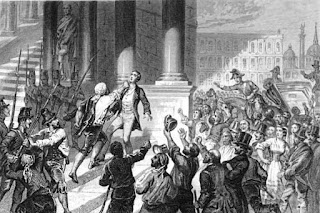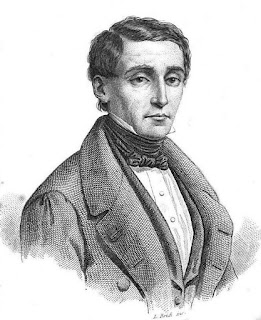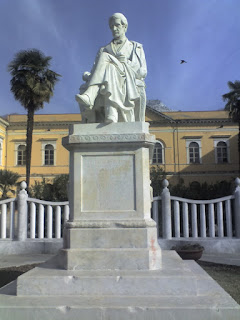Pontiff who regarded himself as a prisoner
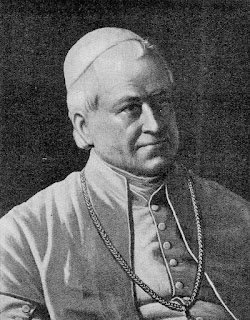 |
| Pope Pius IX's reign was the longest in history but ended in controversy |
He is also remembered for permanently losing control of the Papal States, which became part of the Kingdom of Italy in 1870. Afterwards he refused to leave Vatican City and often referred to himself as ‘a prisoner of the Vatican’.
Pius IX was born Giovanni Maria Mastai Ferretti in 1792 in Senigallia in Le Marche which was then part of the Papal States.
While studying theology, Mastai Ferretti met Pope Pius VII when he was visiting his hometown and afterwards, he entered the Papal Noble Guard. He was dismissed after he suffered an epileptic seizure, but Pius VII supported him continuing with his theological studies and he was ordained a priest in 1819.
Pope Leo X chose him to support the Apostolic Nunzio on a mission to Chile and although it ended in failure the Pope gave him new roles and appointed him Archbishop of Spoleto in 1827, where he gained the reputation of being both efficient and liberal.
Mastai Ferretti became Cardinal Priest of Santi Marcellino e Pietro, where he was known for visiting prisoners, devising programmes to help street children and sympathising with the nationalist movement in Italy.
 |
| The murder of Pellegrino Rossi sparked an angry uprising against the papal government |
But after the revolutions of 1848, Pius IX changed his position. He had appointed Pellegrino Rossi, an economist and politician as his Interior Minister and put him in charge of a programme of unpopular reforms. He also withdrew the support of the Papal Army from the First Italian War of Independence against the Austrian Empire.
On November 15 1848, when Rossi arrived at the Palazzo della Cancelleria to present his plans for a new constitutional order, he was stabbed in the neck while climbing the stairs to the assembly hall.
The murder of Rossi encouraged an uprising against the papal government and Pius IX was besieged inside the Palazzo del Quirinale by an unruly mob. Pius IX was forced to negotiate with the revolutionaries and to appoint a more liberal ministry.
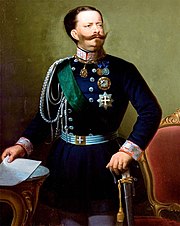 |
| Victor Emanuel II was excommunicated by Pius IX |
A Roman Republic was declared in February 1849 and Pius IX responded form his exile by excommunicating all those taking part.
When the Pope returned to Rome in 1850, he decided to move from the Quirinale to the Vatican, where popes have resided ever since.
After defeating the papal army in 1860, Victor Emanuel II of Sardinia seized all the papal territories and took the title King of Italy. Pius IX refused to recognise the new Italian kingdom and excommunicated all the leaders, including the King.
Pius IX absolved Victor Emanuel II of all excommunications and punishments before the King died in January 1878 and gave permission for him to be buried in the Pantheon. The Pope died himself one month later on 7 February, aged 85. Although tradition holds that Saint Peter was Pope for 37 years, this can’t be verified, so Pius IX is on record as having had the longest, verified papal reign, at almost 32 years.
He was originally buried in St Peter’s grotto, but his body was moved in a night procession in 1881 to the Basilica of St Lawrence outside the Walls. As the procession approached the river, soldiers had to prevent a group of protesting Romans from throwing the coffin into the Tiber.
Pius IX was beatified in 2000 by Pope John Paul II, who gave him a more elaborate tomb in the Basilica rather than the simple grave where he was originally laid to rest. The annual liturgical commemoration for Pius IX was declared to be 7 February, the date of his death.
 |
| The 1930s Liberty-style Rotonda a Mare is an attraction of modern-day Senigallia |
Senigallia, where Pope Pius IX was born, is a port town on the Adriatic coast in the province of Ancona in Le Marche. Senigallia was captured and recaptured many times by opposing sides in the Guelph and Ghibelline wars. In 1503, Cesare Borgia carried out a raid on Senigallia to punish some of his disloyal supporters. The port was then ruled by the Della Rovere family and Medici family in turn before being annexed to the papal states. The town was damaged during World War I, by a powerful earthquake in 1930, and during World War II. It is now a popular summer holiday destination.
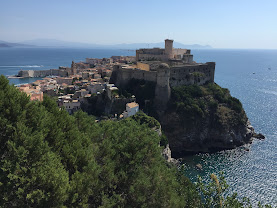 |
| Gaeta is built on a promontory jutting out into the Gulf of Gaeta |
Travel tip:
Gaeta, where Pope Pius IX fled after being besieged in Palazzo del Quirinale in Rome, is a city in the province of Latina in Lazio, 120 km (75 miles) south of Rome, set on a promontory stretching towards the Gulf of Gaeta. Today it is a fishing and oil seaport and a popular resort with tourists. It has a huge Aragonese-Angevine Castle, which dates back to the sixth century and the Cathedral of Assunta e Sant’Erasmo, which was built over a more ancient church and consecrated by Pope Paschal II in 1106.
Also on this day:
1497: The Bonfire of the Vanities
1622: The birth of Vittoria della Rovere, Grand Duchess of Tuscany
1909: The birth of army horseman Amedeo Guillet
1941: The birth of pop singer Little Tony
